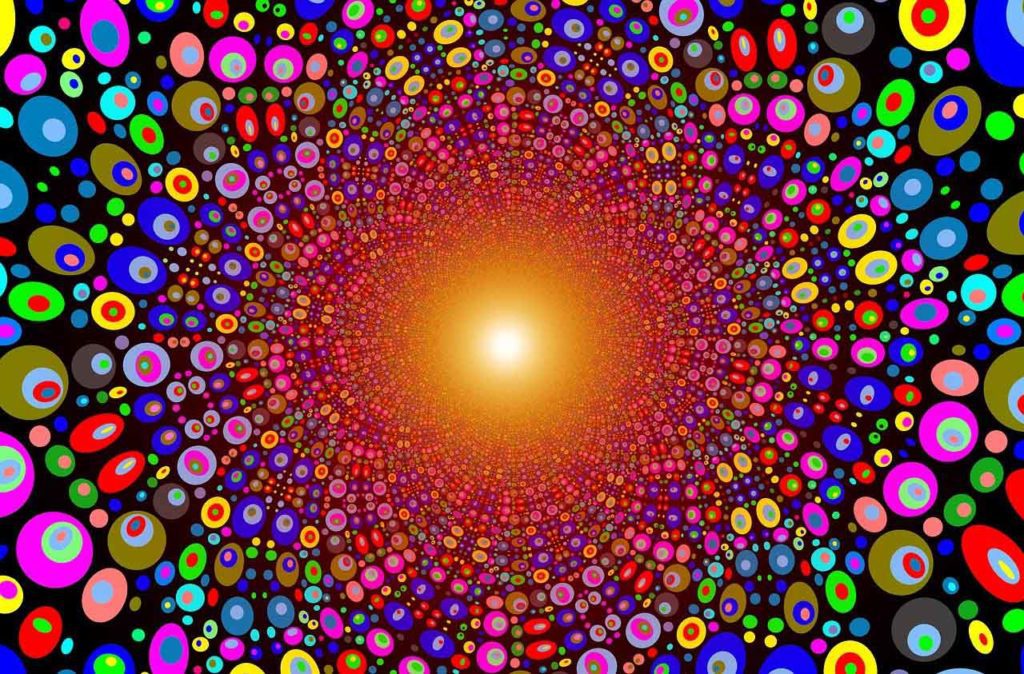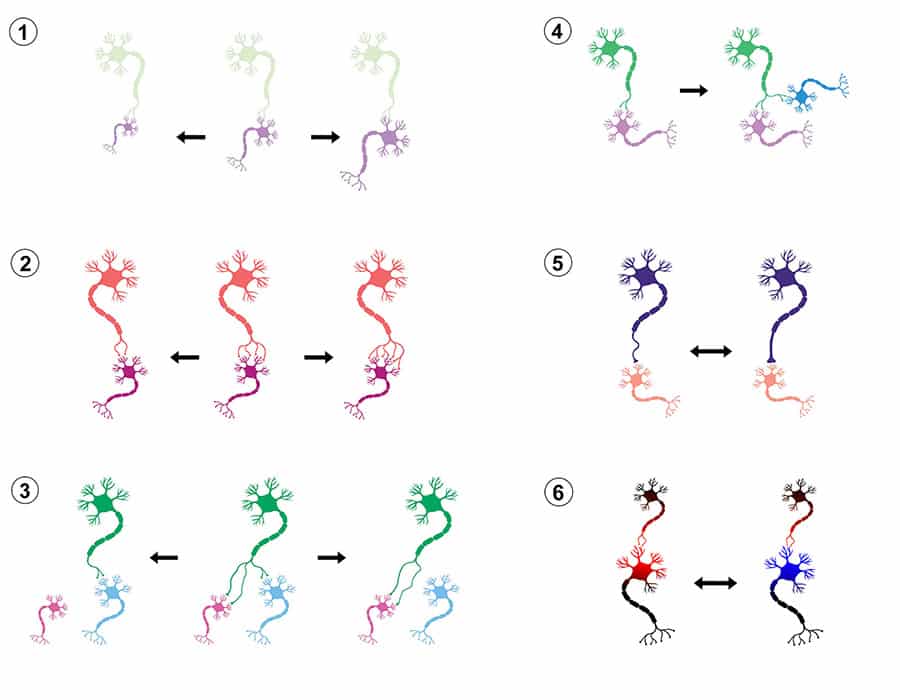Psilocybin and Neurogenesis: The Long-Term Effects of Magic Mushrooms on Your Brain

Neurogenesis and neuroplasticity are two terms you might have heard before – especially if you’ve been learning about psychedelics.
Our brains have the potential to change and grow over the course of our lives, and if they are more “plastic” in later life we are less likely to suffer from depression, and we may find it easier to learn new things. Psychedelics have been shown to have the potential to boost this neuroplasticity in our brains.
Psilocybin, the main psychedelic ingredient of magic mushrooms, has an important link to neurogenesis and neuroplasticity. An important study shows that psilocybin can influence neuroplasticity in rodent brains – but the direction of the effect depends on dosage.
Since microdosing with magic mushrooms is one of the easiest ways to bring psilocybin into your daily life, could the neuroplastic effects of magic mushrooms be most effective and accessible in small doses? We investigate here…
What Are Neurogenesis and Neuroplasticity?
Neurogenesis is the specific term for the growth of new brain cells – but it falls under the umbrella of neuroplasticity. Neuroplasticity is the term used to describe pretty much any change in the way brain cells (neurons) connect to each other, grow, and communicate.
There are six main forms of neuroplasticity (including neurogenesis), which we’ve illustrated here:

- Changes in the size of individual neurons
- Changes in the number of connections between neurons
- Changes in where neurons connect to each other
- The growth of brand new neurons (neurogenesis)
- Changes in the strength of the connections between neurons (also known as synaptic plasticity)
- Changes in the response of neurons to signals
Although all brains are capable, to some extent, of neuroplasticity – most of the changes in the brain happen in childhood. Our adult brains stay pretty stable. This is why boosts in neuroplasticity in adulthood are special, and usually have pretty healing effects!
What Are the Benefits of Neurogenesis and Neuroplasticity?
Although research into neuroplasticity is still in its infancy, we know some of the benefits of increases in neuroplasticity in adult mammals.
Loads of evidence suggests that neuroplasticity in one particular area of the brain, the hippocampus, is crucial for learning and memory. When both humans and rodents are learning tasks, or remembering patterns, the hippocampus is very active – and synaptic plasticity (changes in the strength of the connections between neurons) seems to be a crucial part of this.1
There’s also a strong connection between neuroplasticity and the fight against depression. People with depression are more likely to have signs of reduced numbers of neurons and connections between neurons across different areas of the brain. This is thought to be how some of the most common antidepressants work; by boosting neuroplasticity.2
In general, the research into neuroplasticity suggests that having a brain capable of changing its structure and activity may help you adapt more quickly to new information, and be more flexible – skills that are crucial in psychological wellbeing.
Pursuits such as exercise and meditation have been proven to boost neuroplasticity, and changing to a diet that includes less sugar and fat, and superfoods like walnuts and blueberries, has been shown to increase neuroplasticity in rodents.3,4,5,6,7
As well as changes to your lifestyle, taking psychedelics can also influence neuroplasticity. Studies using both psilocybin and other common psychedelics have shown how they can change the connectivity and growth of neurons.
LSD and DMT have been shown to help rat neurons create more complex connections between each other, and the psychoactive components of the ayahuasca vine have been shown to boost the growth of mouse neurons.8,9 But the results with psilocybin aren’t as clear cut…
One study in mice found that small doses (0.1mg/kg) of psilocybin increased the growth of new brain cells in the hippocampus, while high doses (1mg/kg) reduced this growth.10 Although we don’t know for sure that something similar is happening in humans, it suggests that dosage could be really important if you’re using psychedelics to boost neuroplasticity!

However, while small doses of psilocybin may be better at boosting the growth of brain cells, we know that larger doses are effective at changing the way neurons communicate. Studies show that typical tripping doses of psilocybin allows neurons to connect with each other along unusual pathways,11 and then reset themselves into a more stable and healthy configuration after the trip.12
This kind of neuroplasticity is much more about the patterns of connection throughout the brain, rather than the growth of new cells in particular areas – but it can be particularly important for the fight against depression.
How to Use Psilocybin to Boost Your Neuroplasticity
From the research we have so far, it seems that small doses of psilocybin are more likely to boost neurogenesis (the growth of new brain cells), while larger doses have a greater effect on the connectivity between brain cells. While both of these types of neurogenesis and neuroplasticity could likely impart benefits such as increased creativity, reduced depressive symptoms, and boosted psychological flexibility, it’s hard to know which is better.
There is plenty of evidence that shows a single moderate or high dose of psilocybin can have therapeutic effects, especially in the treatment of depression and anxiety. So if you’re looking for an immediate and powerful boost to neuroplasticity, a magic mushroom retreat or ceremony where larger doses are used might be your best option.
Conversely, there is barely any research into the effects of microdosing with magic mushrooms, so we don’t know for sure the role of neurogenesis or neuroplasticity with small doses.
Taking what we can from the study on mice, we know that doses closer to a microdose (around 1-2mg of psilocybin) seem to boost neurogenesis more than larger doses – it’s just hard to know what this means for humans, and whether a microdosing regimen will be overall more beneficial for neuroplasticity than a single large dose.
Despite the lack of evidence, what we do know is how to amplify any benefits to neuroplasticity if you’re microdosing with magic mushrooms…
How to Microdose with Magic Mushrooms for Neuroplasticity
If you’re new to microdosing with magic mushrooms, check out our Seeker’s Guide for an introduction. But if you want to microdose with magic mushrooms specifically for neuroplasticity, you should also try to combine your microdosing with some additional practices.
There’s a lot of evidence connecting wellbeing practices with neuroplasticity, so to maximize any neuroplasticity benefits you should incorporate these things as much as you can:
- Yoga and exercise. Increases in neuroplasticity could help you learn new exercise routines faster than normal, and help them remain a permanent fixture on your calendar.
- Meditation or regular affirmation (prayer). You may find meditation easier to learn if magic mushrooms are giving you a boost in neuroplasticity, and meditation has also been proven to increase neuroplasticity in itself.
- Healthy dieting. Microdosing may be the best time to try out a new, healthier diet, as you may find it easier to stick to – and switching away from high-fat high-sugar diets has been shown to increase neuroplasticity.
- Therapy or counseling. If a boost in neuroplasticity is helping improve your psychological flexibility, now may be the perfect time to get professional guidance in how to best apply any increased capacity for self-reflection.
Making these pursuits part of your microdosing routine could not only help to maximize any boost in neuroplasticity that psilocybin gives you, but the effects of microdosing could also help you adapt to these lifestyle changes much faster than normal! Many people report that microdosing helps them enjoy exercise more, or actually get joy from changing to a healthier diet.
As always, when microdosing with magic mushrooms for neuroplasticity you should be keeping a journal to help monitor any effects and find your perfect dose. You should stop if you feel any negative effects, and even if you are feeling great during your regimen you should never microdose for more than three months at a time.
Where to get Magic Mushrooms for Microdosing
If you’re keen on microdosing with magic mushrooms, there are a number of ways to get your hands on some! Read our full guide on the best ways to obtain magic mushrooms. You don’t even have to break the law – we only recommend that people pursue the legal options in their country.
References
[1] Mansvelder et al (2019). Synaptic plasticity in human cortical circuits: cellular mechanisms of learning and memory in the human brain? Curr Opin Neurobiol 54:186-193.
[2] Morais et al (2014). The effects of chronic stress on hippocampal adult neurogenesis and dendritic plasticity are reversed by selective MAO-A inhibition. J Psychopharmacol 28(12):1178-83.
[3] Erickson et al (2012). The aging hippocampus: interactions between exercise, depression, and BDNF. Neuroscientist 18(1):82-97.
[4] Hölzel et al (2011). Mindfulness practice leads to increases in regional brain gray matter density. Psychiatry Res 30;191(1):36-43.
[5] Reichelt et al (2019). A high-fat high-sugar diet in adolescent rats impairs social memory and alters chemical markers characteristic of atypical neuroplasticity and parvalbumin interneuron depletion in the medial prefrontal cortex. Food Funct 10, 1985-1998
[6] An et al (2018). Walnut diets up-regulate the decreased hippocampal neurogenesis and age-related cognitive dysfunction in d-galactose induced aged rats. Food Funct 9, 4755-4762.
[7] Carey et al (2019). Blueberry supplementation attenuates microglia activation and increases neuroplasticity in mice consuming a high-fat diet. Nutritional Neuroscience 22:4, 253-263.
[8] Ly et al (2018). Psychedelics Promote Structural and Functional Neural Plasticity, Cell Reports 23(11), 3170-3182.
[9] Morales-García et al (2017). The alkaloids of Banisteriopsis caapi, the plant source of the Amazonian hallucinogen Ayahuasca, stimulate adult neurogenesis in vitro. Sci Rep 7(1):5309.
[10] Catlow et al (2013). Effects of psilocybin on hippocampal neurogenesis and extinction of trace fear conditioning. Exp Brain Res 228, 481–491.
[11] Tagliazucchi et al (2014). Enhanced repertoire of brain dynamical states during the psychedelic experience. Hum Brain Mapp 35(11):5442-56.12 Carhart-Harris et al (2017). Psilocybin for treatment-resistant depression: fMRI-measured brain mechanisms. Sci Rep 7(1):13187.
